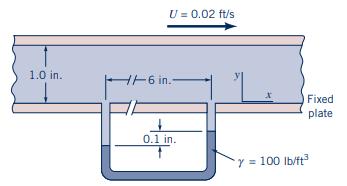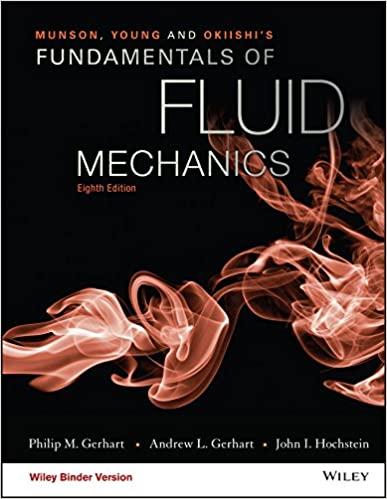A viscous fluid (specific weight (=80 mathrm{lb} / mathrm{ft}^{3}); viscosity (=) (0.03 mathrm{lb} cdot mathrm{s} / mathrm{ft}^{2})
Question:
A viscous fluid (specific weight \(=80 \mathrm{lb} / \mathrm{ft}^{3}\); viscosity \(=\) \(0.03 \mathrm{lb} \cdot \mathrm{s} / \mathrm{ft}^{2}\) ) is contained between two infinite, horizontal parallel plates as shown in Fig. P6.82. The fluid moves between the plates under the action of a pressure gradient, and the upper plate moves with a velocity \(U\) while the bottom plate is fixed. A U-tube manometer connected between two points along the bottom indicates a differential reading of \(0.1 \mathrm{in}\). If the upper plate moves with a velocity of \(0.02 \mathrm{ft} / \mathrm{s}\), at what distance from the bottom plate does the maximum velocity in the gap between the two plates occur? Assume laminar flow.
Figure P6.82

Step by Step Answer:

Munson Young And Okiishi's Fundamentals Of Fluid Mechanics
ISBN: 9781119080701
8th Edition
Authors: Philip M. Gerhart, Andrew L. Gerhart, John I. Hochstein





